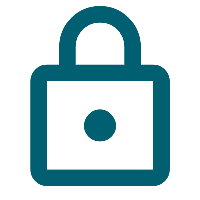Essential Digital Skills (EDS)
These are the skills required to be digitally proficient in day-to-day life and work
About the Essential Digital Skills (EDS) framework
The Essential Digital Skills (EDS) framework is used by Lloyds Bank to assess the levels of digital capability across the UK, as part of their annual Consumer Digital Index. The framework reflects the range of skills people need to safely benefit from, participate in and contribute to the digital world.
It outlines five key skills and the digital tasks that people should be able to complete to demonstrate each skill in both life and work. The framework is underpinned by the foundation skills an individual needs to access technology at the most basic level (such as turning a device on or using a mouse).
Five essential digital skill areas
- Communicating
- Handling information and content
- Transacting
- Problem-solving
- Being safe and legal online
The foundation level
The Foundation Level consists of eight tasks that make up the most fundamental tasks to set up an individual for success online. An individual needs to perform all eight tasks without assistance to have the Foundation Level.
- You can turn on the device and enter any account login information as required
- You can use the available controls on your device (for example, mouse, keyboard, touchscreen and trackpad)
- You can use the different settings on your device to make it easier to use (for example, adjust font size, volume settings, brightness of screen, voice activation or screen readers)
- You can find and open different applications, programmes and platforms on your devices (for example, opening a web browser, messaging applications)
- You can set up a connection to a Wi-Fi network on your devices (For example, when at home, work, out in public or visiting family and friends)
- You can open an Internet browser to find and use websites (Such as, Safari, Google Chrome, Mozilla Firefox or Microsoft Edge)
- You can keep your login information and passwords for a device and any accounts secure (For example, not shared with anyone or written down or left prominently near a device)
- You can update and change your password when prompted to do so

Being safe and legal online
Being safe and legal online involves nine skills which are essential for both the Life EDS and Work EDS frameworks.
- You can act with caution online and understand that there are risks and threats involved in carrying out activities online. For example, use anti-virus software, classify and share information securely or avoid certain types of websites such as piracy websites.
- You can set privacy and marketing settings for websites and your accounts. For example, by managing social media privacy settings, managing cookie settings, or updating contact preferences.
- You can follow data protection guidelines online. For example, by following data storage and retention guidelines, and not sharing or using other people’s data or media, such as movies or music, without their consent.
- You can respond to requests for authentication for online accounts. For example, by resetting your password when you have forgotten it, using two-factor authentication, or using a remote access key or an authenticator app.
- You can identify secure websites. For example, by looking for the padlock and ‘https’ in the address bar.
- You can recognise suspicious links and know that clicking on these links or downloading unfamiliar attachments is a risk. For example, spam or phishing emails, text messages, or pop-ups.
- You can update your device software or operating system when necessary to prevent viruses and other risks. For example, by enabling automatic updates, or installing when prompted to do so.
- You can identify secure Wi-Fi networks to connect to. For example, by using Wi-Fi networks where a unique password is required, and looking for a trusted source or padlock next to Wi-Fi network.
- You can be careful with what you share online as you know that online activity produces a permanent record that can be accessed by others. For example, publicly shared photos, forums, personal information or opinions.


